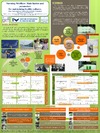Identificador persistente para citar o vincular este elemento:
https://accedacris.ulpgc.es/jspui/handle/10553/11839
| Campo DC | Valor | idioma |
|---|---|---|
| dc.contributor.author | Tames-Espinosa, Mayte | en_US |
| dc.contributor.author | Bru, Eduardo | en_US |
| dc.contributor.author | O'Shanahan Roca, Leopoldo | en_US |
| dc.contributor.author | Gómez, May | en_US |
| dc.contributor.author | Packard, Theodore Train | en_US |
| dc.date.accessioned | 2014-06-09T11:47:24Z | - |
| dc.date.accessioned | 2018-06-15T09:19:02Z | - |
| dc.date.available | 2014-06-09T11:47:24Z | - |
| dc.date.available | 2018-06-15T09:19:02Z | - |
| dc.date.issued | 2014 | en_US |
| dc.identifier.uri | https://accedacris.ulpgc.es/handle/10553/11839 | - |
| dc.description.abstract | The atmospheric CO2 level is rising. Its greenhouse effect is partially mitigated by terrestrial (plants) and marine photosynthetic organisms (algae, phytoplankton), and also by the less-known chemosynthetic bacteria. Within this group of bacteria, nitrifiers have a direct and indirect impact on carbon fixation because, on one hand, they are autotrophs and, on the other, they release inorganic nitrogenous nutrients that feed other photoautotrophs. A new assay which simplifies the measurement of nitrification would improve our knowledge about the ocean’s capacity to fix CO2. Knowing how to cultivate these microbes from marine water samples is a first step towards developing new nitrification detection techniques. During the last six months, we have isolated and cultured a natural assembledge of marine nitrifiers. Our larger objective is to develop a way to enzymatically detect nitrification. However, to do this, we need large quantities of nitrifiers. Consequently, at this point, culturing this marine nitrifier community is our priority. We have learned that pH, nutrient levels, air flow, temperature, low light and sterility are critical for growing healthy nitrifiers. With this knowledge we will now be able to conduct experiments with the nitrifiers and develop the methodology that we seek. | en_US |
| dc.language | eng | en_US |
| dc.source | IV Congreso de Ciencias del Mar | en_US |
| dc.subject | 251001 Oceanografía biológica | en_US |
| dc.subject.other | Nitrification | en_US |
| dc.subject.other | Nitrifiers | en_US |
| dc.subject.other | Bacterial culture | en_US |
| dc.subject.other | Climate change | en_US |
| dc.title | Farming Nitrifiers: Main factors and parameters for maintaining healthy cultures | en_US |
| dc.type | info:eu-repo/semantics/conferenceobject | en_US |
| dc.type | Conference poster | en_US |
| dc.identifier.absysnet | 699113 | - |
| dc.investigacion | Ciencias | en_US |
| dc.rights.accessrights | info:eu-repo/semantics/openAccess | es |
| dc.type2 | Póster de congresos | en_US |
| dc.utils.revision | Sí | en_US |
| dc.identifier.ulpgc | Sí | en_US |
| item.fulltext | Con texto completo | - |
| item.grantfulltext | open | - |
| crisitem.author.dept | GIR ECOAQUA: Ecofisiología de Organismos Marinos | - |
| crisitem.author.dept | IU de Investigación en Acuicultura Sostenible y Ec | - |
| crisitem.author.dept | Departamento de Biología | - |
| crisitem.author.dept | GIR ECOAQUA: Ecofisiología de Organismos Marinos | - |
| crisitem.author.dept | IU de Investigación en Acuicultura Sostenible y Ec | - |
| crisitem.author.orcid | 0000-0003-0607-5321 | - |
| crisitem.author.orcid | 0000-0002-7396-6493 | - |
| crisitem.author.orcid | 0000-0002-5880-1199 | - |
| crisitem.author.parentorg | IU de Investigación en Acuicultura Sostenible y Ec | - |
| crisitem.author.parentorg | IU de Investigación en Acuicultura Sostenible y Ec | - |
| crisitem.author.fullName | Tames Espinosa, Maria Teresa | - |
| crisitem.author.fullName | Gómez Cabrera, María Milagrosa | - |
| crisitem.author.fullName | Packard, Theodore Train | - |
| Colección: | Póster de congreso | |
Visitas
42
actualizado el 15-jun-2024
Descargas
23
actualizado el 15-jun-2024
Google ScholarTM
Verifica
Comparte
Exporta metadatos
Este elemento está sujeto a una licencia Licencia Creative Commons

